 In the ’80s, ’90s and early part of the 2000s, upgrading the car stereo system in your vehicle was a relatively simple process. You’d start by picking out a new radio that offered the features you wanted and add a set of speakers to improve the sound of the system. Pretty much anyone with a basic understanding of electrical systems could use a wire harness adapter to install the radio, and the speaker installation was usually a drop-in upgrade, save for having to crimp on some spade connectors.
In the ’80s, ’90s and early part of the 2000s, upgrading the car stereo system in your vehicle was a relatively simple process. You’d start by picking out a new radio that offered the features you wanted and add a set of speakers to improve the sound of the system. Pretty much anyone with a basic understanding of electrical systems could use a wire harness adapter to install the radio, and the speaker installation was usually a drop-in upgrade, save for having to crimp on some spade connectors.
The Reality of Modern Car Audio
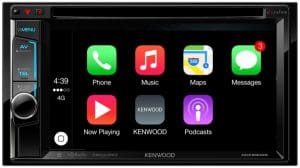 Fast-forward to 2010 and beyond, and the world of car audio has changed dramatically. Even the most basic of new cars and trucks include Bluetooth hands-free calling and audio streaming technologies, and most will play your MP3 digital audio files from a USB stick. For many people, the only reason to want to upgrade their vehicle is to add a smartphone integration technology like Android Auto or Apple CarPlay.
Fast-forward to 2010 and beyond, and the world of car audio has changed dramatically. Even the most basic of new cars and trucks include Bluetooth hands-free calling and audio streaming technologies, and most will play your MP3 digital audio files from a USB stick. For many people, the only reason to want to upgrade their vehicle is to add a smartphone integration technology like Android Auto or Apple CarPlay.
When it comes to the sound of modern stereo systems, there is still room for improvement. Basic audio systems can still benefit from upgraded speakers, and most vehicles could use a high-quality subwoofer upgrade. The problem with modern sound systems is that the companies like Bose and Harman (the people behind JBL, Infinity, Mark Levinson and Lexicon) are pretty good at what they do. They use powerful digital signal processors to optimize the amplifiers that power these systems to make the most of the speakers in the car. If you upgrade to new speakers, the processing that made cheap speakers sound OK can make your good speakers sound mediocre. In essence, the days of going to a stereo shop to buy a new set of speakers to upgrade the sound in your car are gone.
How Stereo Shops Handle Stereo Upgrades
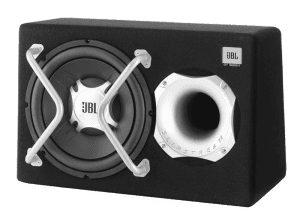 When you take your new car to a shop for a sound system upgrade, there are a few steps required to ensure you will get the performance you want from the system. The first should be a series of questions from the salesperson about how you enjoy your music. Do you listen at high volume levels? Do you like lots of bass? Some will ask you what kind of music you listen to to help understand your goals for your audio system. For the truly dedicated, the questions should include a query about what you hope to improve by upgrading the system. A visit to your vehicle can often provide valuable insight into what’s missing. If you have the bass turned up on the factory radio, you may benefit from a subwoofer. If you have boosted high frequencies, a speaker upgrade may be in order.
When you take your new car to a shop for a sound system upgrade, there are a few steps required to ensure you will get the performance you want from the system. The first should be a series of questions from the salesperson about how you enjoy your music. Do you listen at high volume levels? Do you like lots of bass? Some will ask you what kind of music you listen to to help understand your goals for your audio system. For the truly dedicated, the questions should include a query about what you hope to improve by upgrading the system. A visit to your vehicle can often provide valuable insight into what’s missing. If you have the bass turned up on the factory radio, you may benefit from a subwoofer. If you have boosted high frequencies, a speaker upgrade may be in order.
Your job is to let them know what you have, and what you want. Their job is to determine how to achieve that goal.
Understanding Your Stereo System
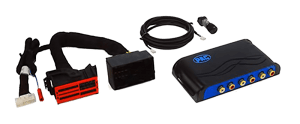 Where the expertise of a mobile electronics specialist retailer shines is in knowing how your factory stereo works and, subsequently, how to upgrade it. Remember the signal processing we talked about at the beginning of the article? If a shop sells you a new set of speakers without addressing this tuning, you may not like the results. There are three options available to deal with this processing. If you can, a new radio and potentially a new amplifier will eliminate the tuning. Audio interfaces include the PAC AmpPRO, iDatalink AR, Axxess AX-DSP or one of the many ZEN-Audio solutions from Nav-TV. Finally, you can add an amplifier with a digital signal processor to correct the tuning for the new speakers. There’s no “best” answer to your upgrade needs, as each vehicle and client’s goals differ.
Where the expertise of a mobile electronics specialist retailer shines is in knowing how your factory stereo works and, subsequently, how to upgrade it. Remember the signal processing we talked about at the beginning of the article? If a shop sells you a new set of speakers without addressing this tuning, you may not like the results. There are three options available to deal with this processing. If you can, a new radio and potentially a new amplifier will eliminate the tuning. Audio interfaces include the PAC AmpPRO, iDatalink AR, Axxess AX-DSP or one of the many ZEN-Audio solutions from Nav-TV. Finally, you can add an amplifier with a digital signal processor to correct the tuning for the new speakers. There’s no “best” answer to your upgrade needs, as each vehicle and client’s goals differ.
The Importance of Signal Processing
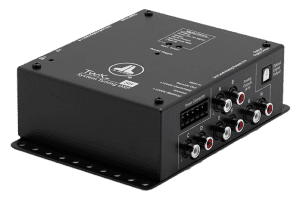 Before you balk at the cost of adding a DSP and amp to your factory stereo, keep in mind that the vehicle manufacturer and its audio system supplier used this very process for making the speakers in your car perform as well as they did.
Before you balk at the cost of adding a DSP and amp to your factory stereo, keep in mind that the vehicle manufacturer and its audio system supplier used this very process for making the speakers in your car perform as well as they did.
System tuning is a critical part of any installation. It can be as basic as setting the crossovers and sensitivity controls on an amp to configuring crossovers, equalization settings and signal delay on a DSP. In either case, an acoustic analyzer can give the installation technician valuable insights to produce a predictable result.
Coping with Sticker Shock
Let’s go back to the late ’90s and work out the speaker upgrade costs. You might have a budget of $200 for a nice set of components for your doors. The shop would likely charge one to two hours to install the speakers, depending on the complexity of the vehicle. In ’90s labor rates, you’d likely be out the door for around $400, including shop supplies and whatever taxes applied in your state or province.
Dealing with a new car is a different story. You can maintain your $200 speaker budget if you want, and chances are, labor rates have increased a little. The basic speaker upgrade and speaker installation is now going to run around $450 to $500. Not too bad, right?
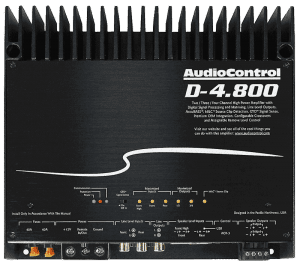 Let’s look at how we handle the tuning in the vehicle. You’ll need an amplifier with a built-in DSP. There are lots of compact solutions available from companies like JL Audio, Mosconi, Helix, Audison, AudioControl, Sony, Alpine and Kicker. A suitable amp will run anywhere from $600 to over $1,000, depending on the features, power capabilities and quality of the unit. Add in speaker wire and power wire for another hundred or so. Depending on how your factory audio system works, you may need one of those vehicle interfaces we talked about. They cost between $250 to almost $1,300 for some of the complex MOST150 interfaces for Mercedes-Benz vehicles.
Let’s look at how we handle the tuning in the vehicle. You’ll need an amplifier with a built-in DSP. There are lots of compact solutions available from companies like JL Audio, Mosconi, Helix, Audison, AudioControl, Sony, Alpine and Kicker. A suitable amp will run anywhere from $600 to over $1,000, depending on the features, power capabilities and quality of the unit. Add in speaker wire and power wire for another hundred or so. Depending on how your factory audio system works, you may need one of those vehicle interfaces we talked about. They cost between $250 to almost $1,300 for some of the complex MOST150 interfaces for Mercedes-Benz vehicles.
Needless to say, attempting to upgrade one of these premium sound systems is, in fact, opening a moderately expensive can of worms. On the low side, you’ll be $1,500 and exceeding $4,000 wouldn’t take long.
Is the Upgrade Worth It?
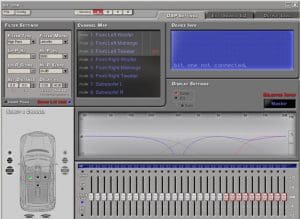 Take a deep breath. Talking about spending thousands of dollars on a speaker upgrade might scare a lot of people. The question is, are the upgrades worthwhile? When executed by a properly trained technician, the answer is unquestionably yes! Not only will new speakers play louder, they produce less distortion to make your music clearer and more detailed. The signal processor can be used to fine-tune the system to provide the overall sound balance you want. Most people enjoy smooth and natural midrange with some accentuation in the midbass region and a little more in the bass region. Your technician can fine-tune the high-frequency response of the system to your preferences and the kind of music you enjoy.
Take a deep breath. Talking about spending thousands of dollars on a speaker upgrade might scare a lot of people. The question is, are the upgrades worthwhile? When executed by a properly trained technician, the answer is unquestionably yes! Not only will new speakers play louder, they produce less distortion to make your music clearer and more detailed. The signal processor can be used to fine-tune the system to provide the overall sound balance you want. Most people enjoy smooth and natural midrange with some accentuation in the midbass region and a little more in the bass region. Your technician can fine-tune the high-frequency response of the system to your preferences and the kind of music you enjoy.
Think of upgrading your stereo like buying a new suit or a dress. You can walk into a store and pick something off the rack. It will fit and do its job, but it might not be perfect in every area. The alternative is to commission someone to create a garment specifically for your needs and the occasion. They’ll measure you, discuss fabric options and consult on the overall design. You end up with something that is exactly what you want and is a joy to wear.
An upgraded audio system is the same. We’ve heard countless stories of clients who enjoy spending time in their vehicle so much, they find themselves looking for excuses to go for a drive. Hearing your music on a reference-quality sound system is indeed like hearing it for the first time. New sounds, new voices and amazing realism are just the starting point. To experience a taste of just how great a mobile audio system can sound, drop by your local car audio specialist retailer and ask to listen to one of their demo vehicles or displays.
This article is written and produced by the team at www.BestCarAudio.com. Reproduction or use of any kind is prohibited without the express written permission of 1sixty8 media.

Leave a Reply